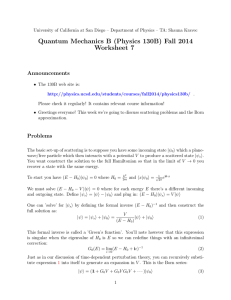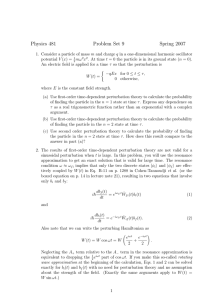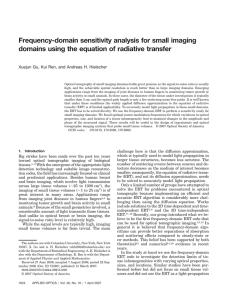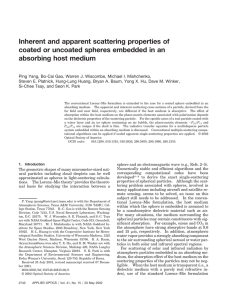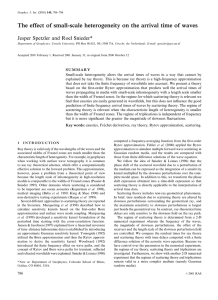Physics 481 Final Exam Spring 2006
advertisement
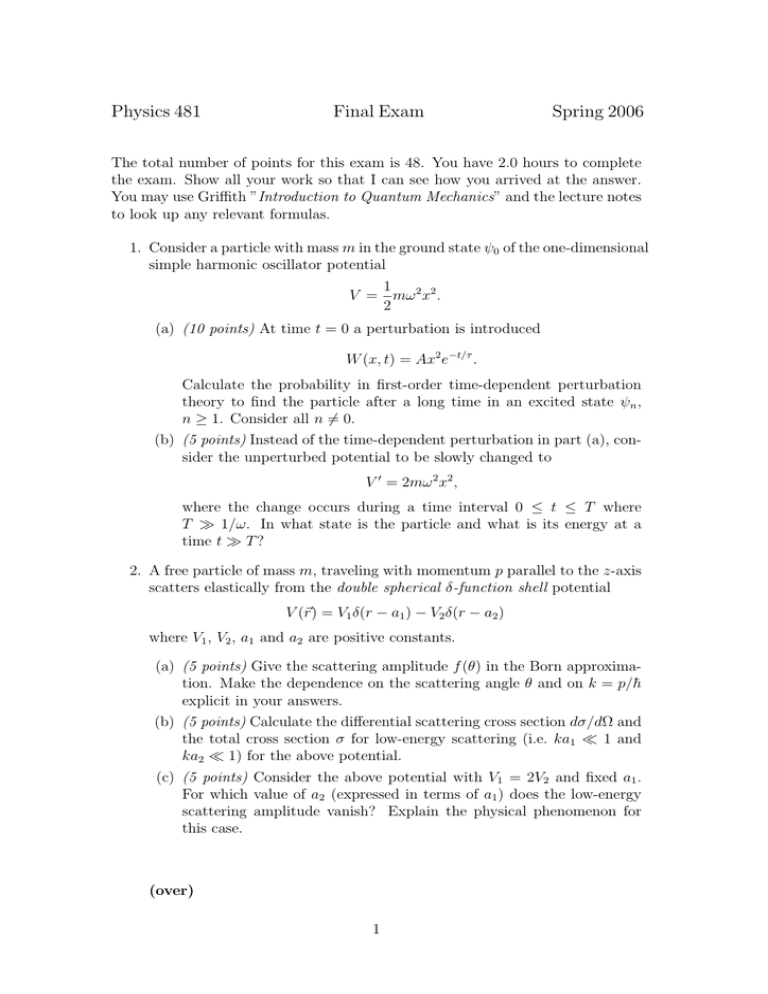
Physics 481 Final Exam Spring 2006 The total number of points for this exam is 48. You have 2.0 hours to complete the exam. Show all your work so that I can see how you arrived at the answer. You may use Griffith ”Introduction to Quantum Mechanics” and the lecture notes to look up any relevant formulas. 1. Consider a particle with mass m in the ground state ψ0 of the one-dimensional simple harmonic oscillator potential 1 V = mω 2 x2 . 2 (a) (10 points) At time t = 0 a perturbation is introduced W (x, t) = Ax2 e−t/τ . Calculate the probability in first-order time-dependent perturbation theory to find the particle after a long time in an excited state ψn , n ≥ 1. Consider all n 6= 0. (b) (5 points) Instead of the time-dependent perturbation in part (a), consider the unperturbed potential to be slowly changed to V 0 = 2mω 2 x2 , where the change occurs during a time interval 0 ≤ t ≤ T where T À 1/ω. In what state is the particle and what is its energy at a time t À T ? 2. A free particle of mass m, traveling with momentum p parallel to the z-axis scatters elastically from the double spherical δ-function shell potential V (~r) = V1 δ(r − a1 ) − V2 δ(r − a2 ) where V1 , V2 , a1 and a2 are positive constants. (a) (5 points) Give the scattering amplitude f (θ) in the Born approximation. Make the dependence on the scattering angle θ and on k = p/h̄ explicit in your answers. (b) (5 points) Calculate the differential scattering cross section dσ/dΩ and the total cross section σ for low-energy scattering (i.e. ka1 ¿ 1 and ka2 ¿ 1) for the above potential. (c) (5 points) Consider the above potential with V1 = 2V2 and fixed a1 . For which value of a2 (expressed in terms of a1 ) does the low-energy scattering amplitude vanish? Explain the physical phenomenon for this case. (over) 1 3. Short answer problems: (a) (6 points) For a sinusoidal time-dependent perturbation, the result from first-order time-dependent perturbation theory is only valid in a certain time interval. Explain the boundaries of this interval. (b) (4 points) In the calculation of the interaction of a hydrogen atom with visible light, we have used the so-called dipole approximation. The dipole approximation is valid for (choose one or more) i. ii. iii. iv. x-rays, microwaves, electromagnetic waves of all wavelengths, none of the above. (c) (4 points) Explain why for low-energy scattering the differential crosssection for the soft-sphere potential ( V (r) = 3V0 4π 0 if r ≤ a, if r > a, and for the soft-cube potential ( V (r) = V0 if − a2 ≤ x, y, z ≤ 0 otherwise. a 2 are the same. (d) (4 points) An electromagnetic wave traveling in the y direction with its electric field polarized along the z direction is absorbed by a hydrogen atom. Which selection rules apply to this case? Good luck ! 2
